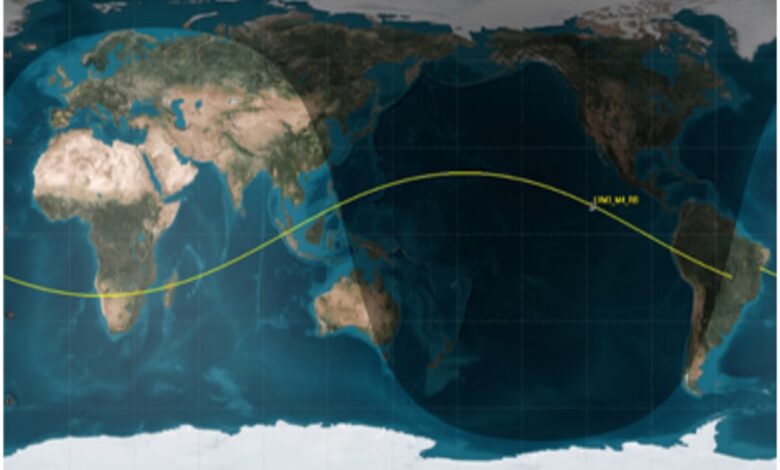Segment of Chandrayaan-3 launch vehicle experiences unplanned re-entry into Earth’s atmosphere
This occurrence took place approximately 124 days after the initial launch.

The Indian Space Research Organisation (ISRO) recently confirmed that the cryogenic upper stage of the LVM3 M4 launch vehicle, responsible for placing the Chandrayaan-3 spacecraft into orbit on July 14, entered the Earth’s atmosphere uncontrollably. This crucial rocket component was an integral part of the LVM-3 M4 launch vehicle, as specified by ISRO.
Probable Impact Zone and Safe Trajectory
ISRO reported that the anticipated impact zone was projected to be over the North Pacific Ocean. Fortunately, the final trajectory did not pass over India. This occurrence took place approximately 124 days after the initial launch. The timing of the re-entry into Earth’s atmosphere was noted at around 14:42 IST.
Adherence to Space Debris Guidelines
ISRO underlined that the post-mission orbital duration of the LVM3 M4 cryogenic upper stage strictly adheres to the “25-year rule” recommended by the Inter-Agency Space Debris Coordination Committee (IADC) for low-Earth orbit objects. This adherence ensures responsible space practices and mitigates the risks associated with space debris.
Passivation Process for Risk Mitigation
Following the successful injection of Chandrayaan-3, the upper stage underwent a crucial process known as “passivation.” This step aims to eliminate all residual propellant and energy sources, significantly reducing the risks linked to accidental explosions. The passivation process aligns with space debris mitigation guidelines outlined by the United Nations and IADC.
International Guidelines and India’s Commitment
ISRO emphasized that the adherence to internationally accepted guidelines in passivating and disposing of the rocket body affirms India’s commitment to preserving the long-term sustainability of activities in outer space. By following these guidelines, India contributes to the global effort to maintain a safe and sustainable environment in outer space.
You might also be intersted in – NCERT modules on Chandrayaan spark controversy, here’s why?



